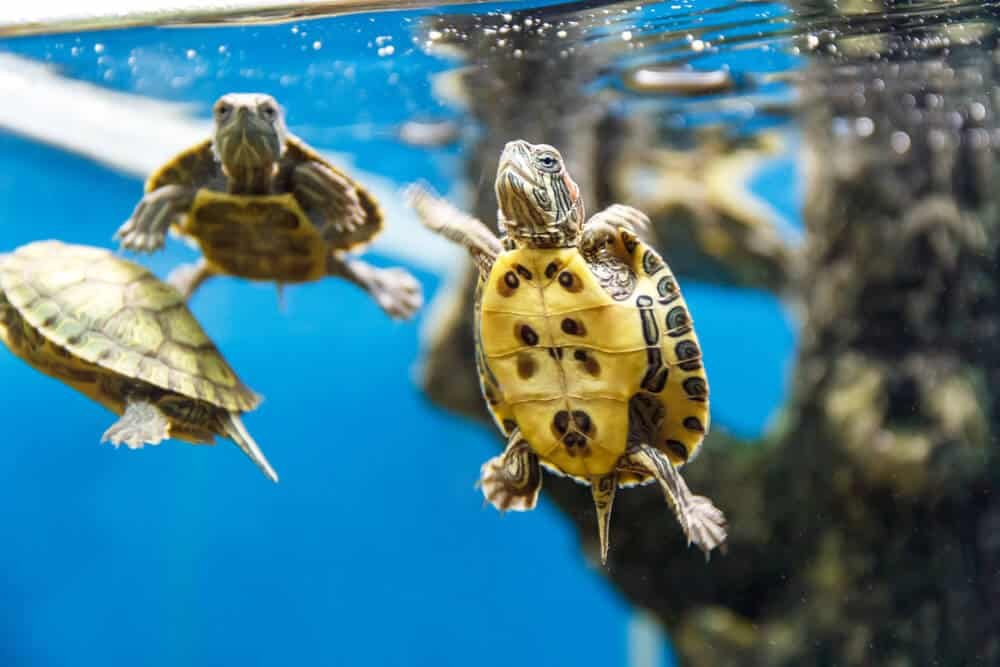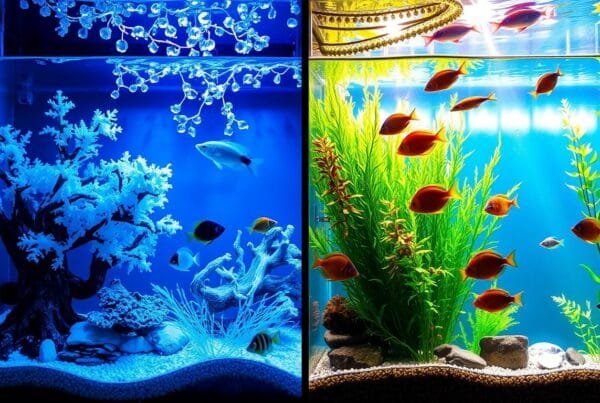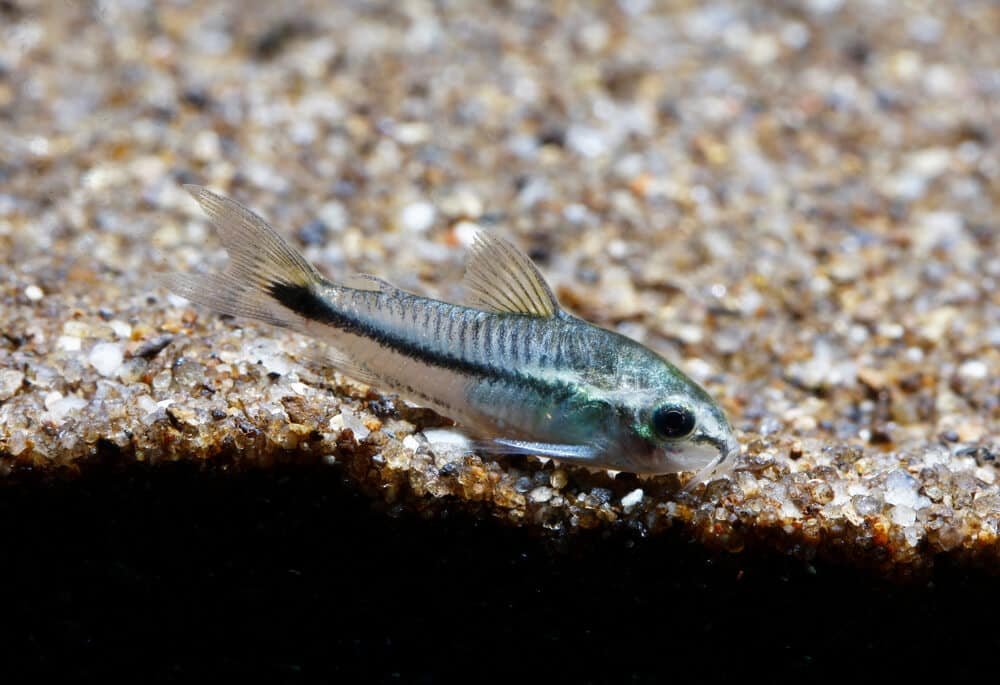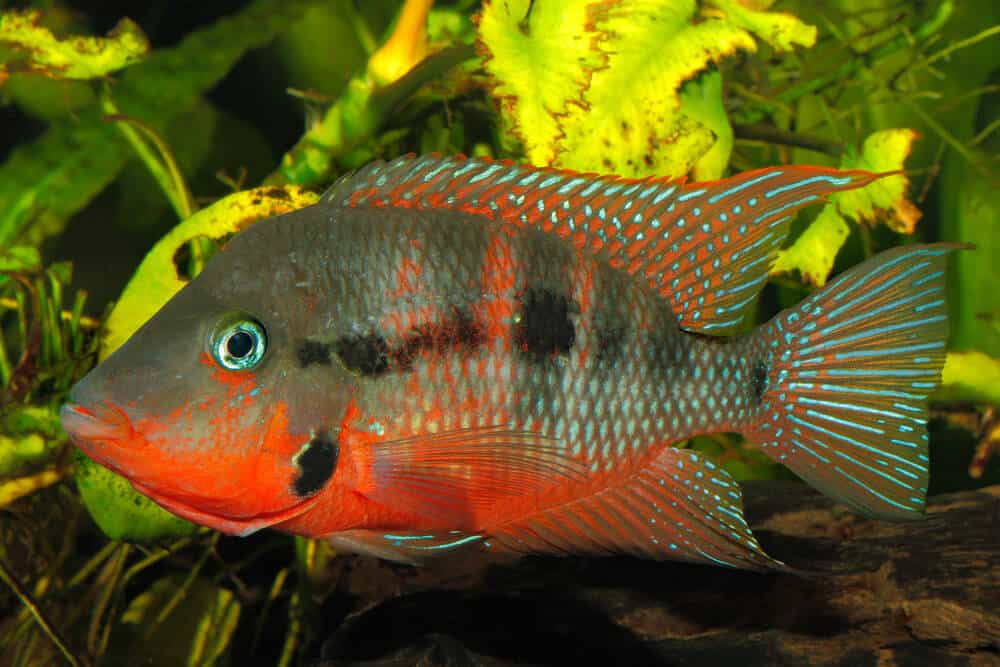Looking for a fish to clean your turtle aquarium so you don’t have to do any tank maintenance?
Even though no such creatures exist to relieve you of all tank management duties, many aquatic animals perform an outstanding job of consuming leftover food, algae, and even pest snails.
In the sections below, we’ll go over how to keep clean-up fish together with a turtle and what kinds of fish are suitable for your turtle tank.
Can I Keep Turtle And Cleaner Fish Together?
Because many turtle species will go after and devour as many fish as they can catch, you must carefully select the appropriate species.
You can bet that if you placed some little, slow-swimming species in with a turtle who sees fish as targets, those fish would not last long.
You have to pick a type that is known to be fast-swimming so that they can quickly avoid the turtle.
You may also notice that the fish and turtle don’t get along immediately. However, if the turtle is happy to be in the tank with the fish, it will most likely be a content pet for many years.
The Best Cleaner Fish For Your Turtle Aquarium
If you go to online turtle pet forums, you’ll find hundreds of different turtle species with particular dietary needs. Many of these turtle species eat meat, while others prefer leafy greens and fruits.
If you want your cleaner fish and turtle to coexist together, getting a herbivore turtle is the best option.
The cleaner fish listed below can be kept with your turtle without giving you so much trouble.
1. Bristlenose Plecos
These fish are quite unusual and very popular in freshwater tanks. Aside from their unusual appearance, they have a penchant for preventing algae growth, which can assist improve the condition of your turtle tank.
These freshwater fish, which originated in the Amazon basins, were first classified in the 1800s. And, when compared to many other common Pleco species, Bristlenose has a substantially longer lifespan, which is why people seem to flock toward this kind of fish.
Another distinction between the Bristlenose and other Plecos is the broader head. Furthermore, Bristlenose Plecos feature a mouth at the underside of their bodies.
2. Chinese Algae Eaters
This fish’s reputation is highly debatable, as some aquarium enthusiasts regard it as an extremely aggressive creature, while others regard it as a pretty solitary species.
However, it is a great choice for turtle tank owners who want to keep their tank clean because it likes to eat algae
Despite the fact that they are labeled as “Chinese”, these fish are native to the Chao Phraya basin and are known by a variety of names among aquarists.
Whatever you call them, you should be aware that their temperament and habits might change as they age, making them tricky to care for.
3. Hillstream Loach
This species sticks out from the crowd thanks to its distinct body form and pattern. They not only look great, but they are also quite easy to maintain.
They spend their time either sitting close to a rock or moving slowly down the tank’s bottom in search of food.
If you want the hillstream loach to live peacefully in your turtle tank, your main focus should be on the water parameters.
Perform regular water tests to ensure that the water temperature does not exceed 75°F and the pH level is less than 7.5.
How To Keep Your Turtle And Cleaner Fish In The Same Tank
You may feel more at ease now that you know it is possible to keep a turtle with cleaner fish and what kind to keep with them.
But, don’t you go out and get a fish from your local pet store just yet! You need to know that the tank must be in good enough condition to keep them together.
Tank Size
The tank must be large enough to accommodate all of the turtles, fish, and other aquatic creatures. And, when you combine multiple kinds of animals, the strain on the filters increases, requiring a robust filtration system to keep the water clean.
Owners of turtles and fish frequently make the error of selecting tanks that are too small and filters that are not powerful enough.
These less-than-ideal conditions also increase the chance of fungus growth, bacteria, and bad living conditions. all of which can lead to stress and hostility in both species.
Your fish and turtle will also require enough water to swim.
A decent rule of thumb is that the water depth must be at least double the turtle’s length. Even so, the tank should not be completely filled with water because turtles require land as well.
Water Conditions And pH Levels
Keeping the water hygiene and Ph levels in a turtle tank is not as simple as most people think.
Turtles are untidy animals who will not clean their living spaces no matter how many times you tell them.
If we don’t keep up, your turtle’s water will quickly get dirty and stinky. This would not only harm your turtle’s health but also the cleaner fish’s, despite their tough and durable nature.
Furthermore, even though turtles are not as vulnerable to chemical shifts as fish are, you should monitor the pH and ammonia levels in the water.
If your tank’s chemical levels meet all standards, all tank occupants should be pleased with the water.
The Takeaway
If you enjoy aquatic animals, you may have considered, “Why should I only put one type of animal in the turtle aquarium?”.
Luckily, as long as you get the right kind of turtle, nothing prevents you from keeping a cleaner fish in the same tank.
However, unless you are certain that the fish would be compatible, it is best to avoid adding them. Making the wrong choice can endanger both the fish and your pet turtle.
Furthermore, there are numerous other factors that have a far greater impact on the overall condition of your turtle tank.







